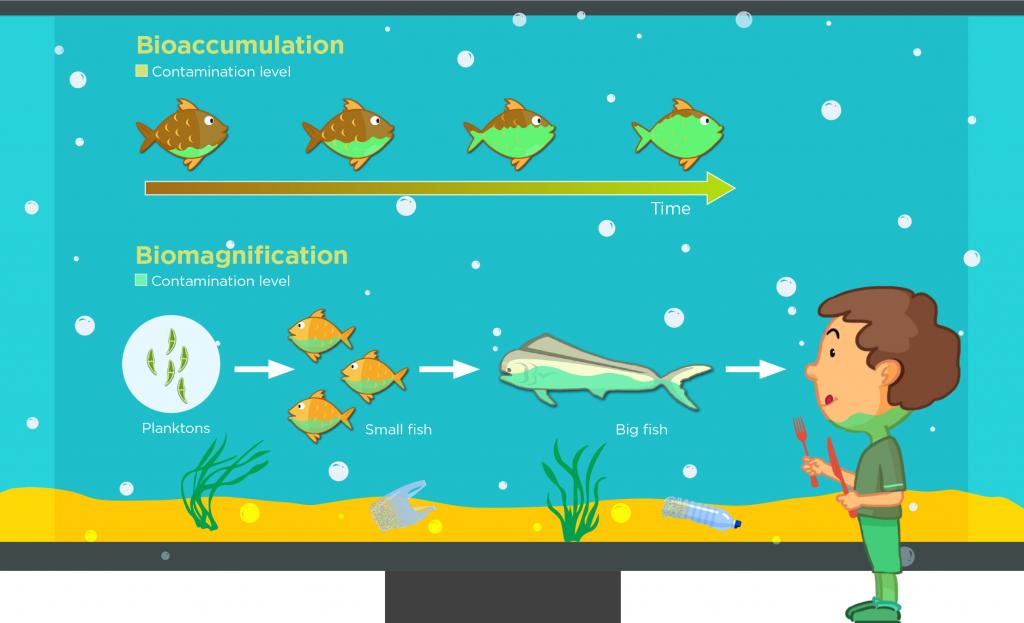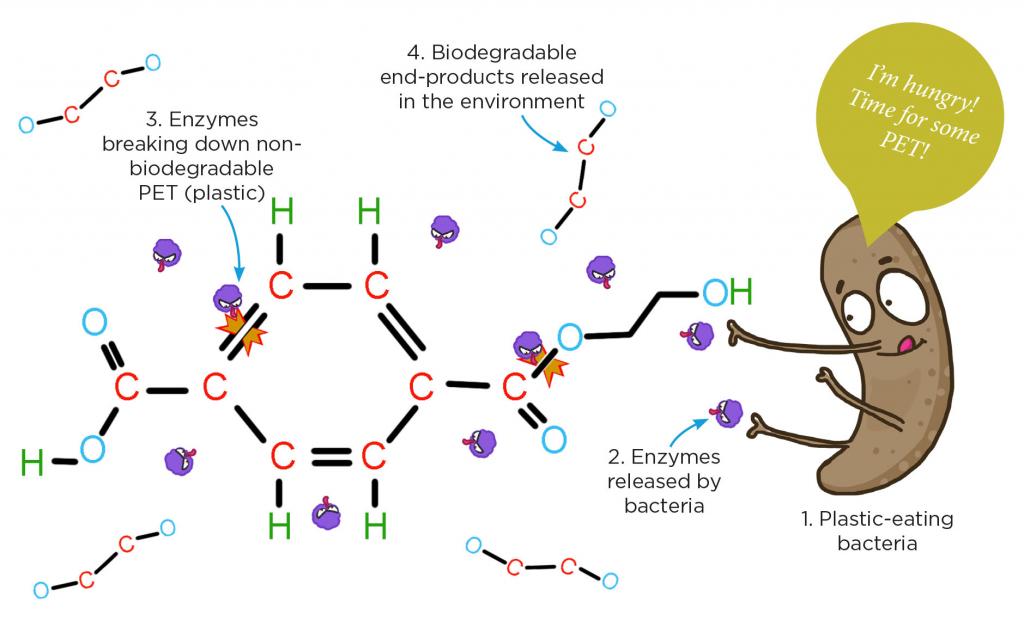
What are Micro-Plastics?
Micro-plastics have not been defined in particular. They are just tiny particles that result from the disintegration of bigger plastic materials. However, most researchers say that any plastic smaller than 5 millimetres in size is a micro-plastic. Hence, these are really, really teeny-tiny!

Plastics are made up of polymers, which are derived from fossil fuels. A whole lot of chemicals are added to the polymers—close to 10,000—to ensure that a given plastic has the desired properties. Over 2,500 of these chemicals are known to be toxic, carcinogenic, or have endocrine disruptive properties... (Psst: ‘Endocrine’ refers to the organs present in our body which secrete hormones into the blood; and hormones are substances that control our growth and development). So, therefore, plastics can have a direct and adverse impact our health.
What are the Sources of Micro-Plastics?
Primary sources of micro-plastics are the plastics we use in our daily lives. Right from the mundane plastic toothbrushes that we use first thing in the morning to the plastic water bottles we sip from every now and then, our exposure to micro-plastics is at a macro level! Most significantly, synthetic textiles, like nylon and polyester—think about your swimsuit and almost all the clothes you wear—include plastic fibres. Microbeads found in personal care products, like your body wash and facial scrubs, are also a source. Now, do you want to pause for a moment and check out all the plastic stuff around you? Oops!
A lot of micro-plastic is formed when a large piece of plastic is subjected to heat, temperature, and other physical factors. For example, disintegration of a plastic bottle due to constant subjection to sunlight and faulty bottling operations generates a lot of micro-plastic. This gets collected in the water inside that bottle and was discovered to be an average of 325 particles per litre, as per a study of the State University of New York at Fredonia, USA. This quantity of micro-plastic is quite considerable when compared to tap water.
Apart from external factors, industrial manufacturing of plastic products—including activities like recycling—may also give rise to micro-plastics.
Why Should We Be Concerned About Micro-Plastics?
It is in the food we eat.
Micro-plastics are a concern because of their widespread presence in our ecosystem. When we throw any plastic garbage indiscriminately into rivers and oceans, it disintegrates over time and becomes micro-plastic. Then, fishes ingest it, confusing it to be a source of food. Birds feed upon these fishes, which in turn are hunted by animals up the food pyramid. Finally, we humans consume such animals and that’s how plastic enters our bodies.

Several research have detected heavy metals, flame retardants, and phthalates— chemical salts containing phthalic acid—posing intense toxicological risks to us. These substances are present in the micro-plastics polluting many marine species, vegetables, fruits, common edible salt, and other regular foods we consume.
It is in the air we breathe.
Most of the face masks we wear to protect against the coronavirus are made from non-woven plastic. These masks expose us directly to micro-plastic inhalation. Similarly, all clothes mentioning ‘poly-ester’ have a considerable amount of plastic. Not just that, your very own acrylic paints and ‘plastic’ crayons are nothing but an obvious submission to plastic!
In fact, scientists are already of the opinion that we may be inhaling much more micro-plastics than we are ingesting.
It is in our bodies.
Continuous exposure to micro-plastics leads to their bioaccumulation and biomagnification within our bodies. Bioaccumulation is simply the gradual accumulation of something inside our bodies. Biomagnification is the accumulation of something to a harmful level inside our bodies. Here, ‘something’ refers to the toxic elements present in micro-plastics, which are getting collected due to our high intake of contaminated food and water.

In 2019, the World Wildlife Fund for Nature found that we people were consuming about 5 grams of plastic every week, through inhalation and ingestion. This is like feeding upon a plastic credit card per week or consuming almost 260 grams of plastic per year.
Poly-ethylene terephthalate (PET) and polyethylene are found to be the most common type of micro-plastics present in our blood stream, as per a study published in the Environment International, 2022. PET is the plastic that is used to manufacture mineral water bottles, and polyethylene is the plastic from which most of our carry bags and milk packets are made these days.
Though a considerable amount of such chemicals are eliminated by our excretory system, it is alarming to note the extent to which they have infested us. Micro-plastics have has already reached the most innocent and vulnerable members of our society—the babies. Baby poop contained traces of micro-plastic in almost 10 times more concentration than adults, as per the body weight and plastic amounts in their faecal samples.
Apart from our stool and blood stream, micro-plastics have also been identified in our lung tissues. According to the Science of the Total Environment, 2022, scientists have found micro-plastics penetrating all parts of the lung with significantly higher levels in the lower lung. Studies have shown them damaging our cells, causing both allergic reactions and cell deaths. They can also trigger inflammatory or immune responses from our body.
Micro-plastics are now existing in all the biotic and abiotic environments—from across our food chain to the freshly fallen snow in Antarctica this year. Nonetheless, there prevails a knowledge gap on the extent of harm they can cause and how we can keep safe, which need to be filled in as we move ahead.

What is the Way Forward?
The United Nations Environment Programme (UNEP) engaged about a 100 countries in educational campaigns to raise awareness on plastic pollution. Other international cooperative programs were also launched to address marine wastes, particularly micro-plastics. In 2015, the United States passed the Microbead-Free Waters Act, which prohibits the manufacture and distribution of rinse-off cosmetics products containing plastic microbeads. These products, like face wash, require the user to wash them with water after application. This causes their plastic microbeads to enter our drains and, eventually, spread in the aquatic system. Many countries have already banned such plastic microbeads. No wonder many products often carry the label, ‘Microbead-free’ these days.
Strategies for remedying micro-plastics include biodegradation using certain bacteria and fungi. A number of microorganisms can breakdown synthetic micro-plastic polymers—such as polystyrene, polyester polyurethane, and polyethylene—into organic stuff. Such microbes can be applied to sewage wastewater to decompose the polluting plastic impurities.

Apart from these scientific solutions, we need better legal policies to arrest this less-spoken pollutant. Unfortunately in India, micro-plastic pollution is rarely discussed, which is obvious from the fact that we don’t even have any micro-plastic policy as yet! Even when these policy interventions are formulated, they will take time to be effective. Thus, till then, let us find plastic alternatives, study the harmful health impacts of plastics, and manage their waste meticulously. Importantly, identify and eliminate all their unwanted pieces from our lives.